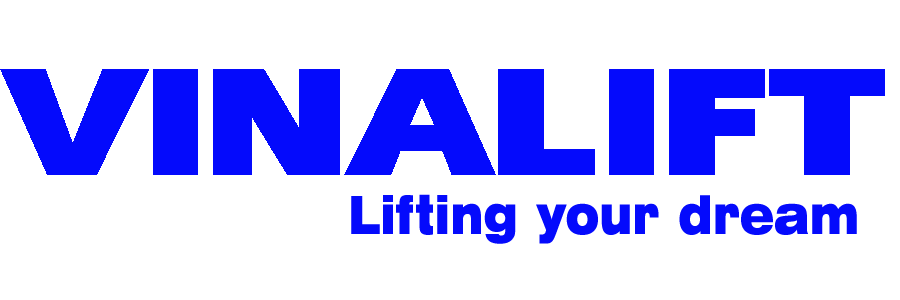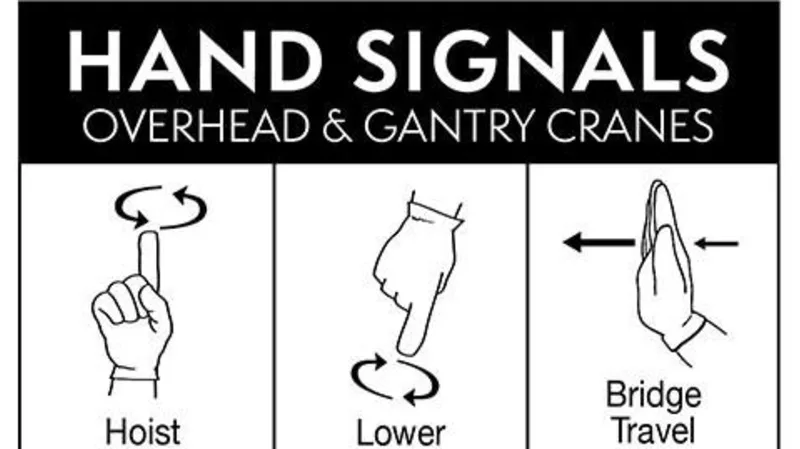Hand signals are used to ensure the safe and smooth operation of lifting equipment by operators and other personnel involved in its use. These signals are a critical part of crane and hoist safety, and everyone involved in their operation must understand and use them correctly.
Operator Requirements
To ensure the safe operation of lifting equipment, the following conditions must be met by the operator and anyone involved in its use (signalman, slingers, etc.):
The operator must be trained in occupational safety before starting work.
The operator must be trained in the operation of the equipment: understanding the equipment and knowing how to operate it safely and correctly.
The operator must be familiar with the hand signals used when operating the equipment.
The operator must not operate the equipment after using stimulants or when not in good health.
Common Hand Signals
The following are some of the most common hand signals for the operation and use of lifting equipment:
- Stop: Extend the arm straight out, palm down, with the forearm bent at a right angle in front of the chest. Extend both arms from the chest to the sides, quickly and continuously.
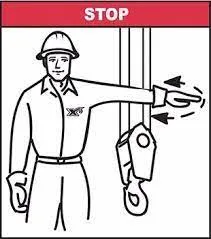
- Emergency Stop: Extend both arms straight out, palms down, with the forearms bent at a right angle in front of the chest. Extend both arms from the chest to the sides, quickly and continuously.
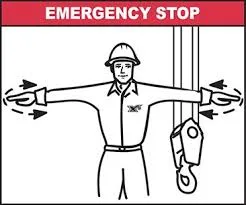
- Hoist: Hold the forearm upright, point the index finger up, and move the hand in a small horizontal circle.
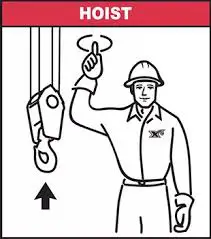
- Lower: Extend the arm straight down, point the index finger down, and move the hand in a small horizontal circle.
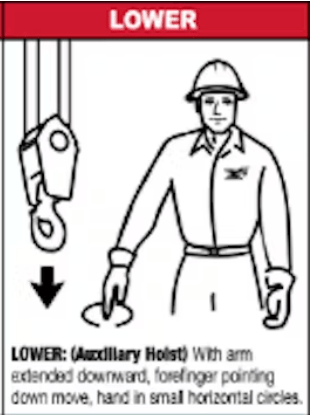
- Trolley Travel: Turn the hand palm up, clench the fingers, point the thumb in the direction of travel, and shake the arm horizontally.
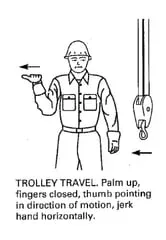
- Bridge Travel: Raise the arm, extend it straight forward, open the hand and point it upwards, move the hand in the direction of travel.
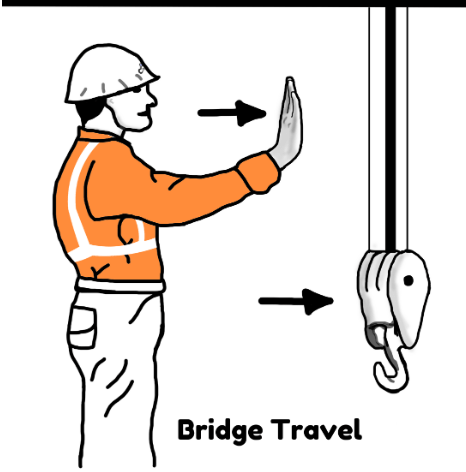
- Multiple Hoists/Hooks: Raise 1 finger for hoist/hook ”1”, 2 fingers for hoist/hook ”2”. Other signals are normal.
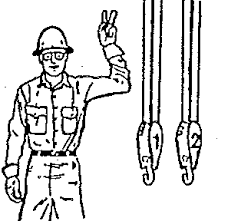
- Move Slowly: Use one hand to signal the move, and keep the other hand stationary opposite the signaling hand.
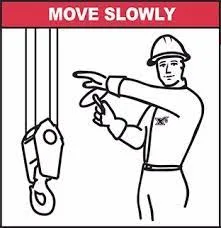
Two-Speed Crane Operation
Lifting and Lowering Loads:
- Do not touch the wire rope or chain during lifting and lowering! This can cause hand injuries if caught in the hook blocks or due to damage to the wire rope or chain.
Lifting Loads with Two Speeds:
- Make sure everything is ready for lifting.
- Press the warning button to alert everyone around before lifting.
- Press the hoist button at low speed to tension the wire rope, and chain, and lift the load safely off the ground.
- Press the hoist button one more level to lift the load at high speed.
- Remove your hand from the button when the load has been lifted to the required height.
Lowering Loads with Two Speeds:
- The lowering process is similar to the lifting process but in reverse.
- Avoid lifting and lowering loads with a short travel at each speed and repeating. This will cause load swings and be dangerous for people and equipment.
Moving Loads with Two Speeds:
- Do not pull on the load or wire rope to guide the load! When guiding the load, walk behind and push the load to guide it and wear appropriate protective gear.
- Do not use your hands or body to stop the load from swinging! The load swinging when moving generates a large force, using your hands or body to hold the load will cause danger and injury to the operator.
Conclusion
Hand signals are an essential part of safe crane and hoist operation. By understanding and using these signals correctly, operators and other personnel can help to ensure the safety of themselves and others.
Thank you for reading this article. Please follow us on our WEBSITE or social media platforms such as FACEBOOK, LINKEDIN, and YOUTUBE for new articles with useful information.
=>>> READ MORE: OVERHEAD CRANE INSTALLATION GUIDE
=>>> READ MORE: HƯỚNG DẪN KIỂM TRA BÔI MỠ CẦU TRỤC, THIẾT BỊ NÂNG
